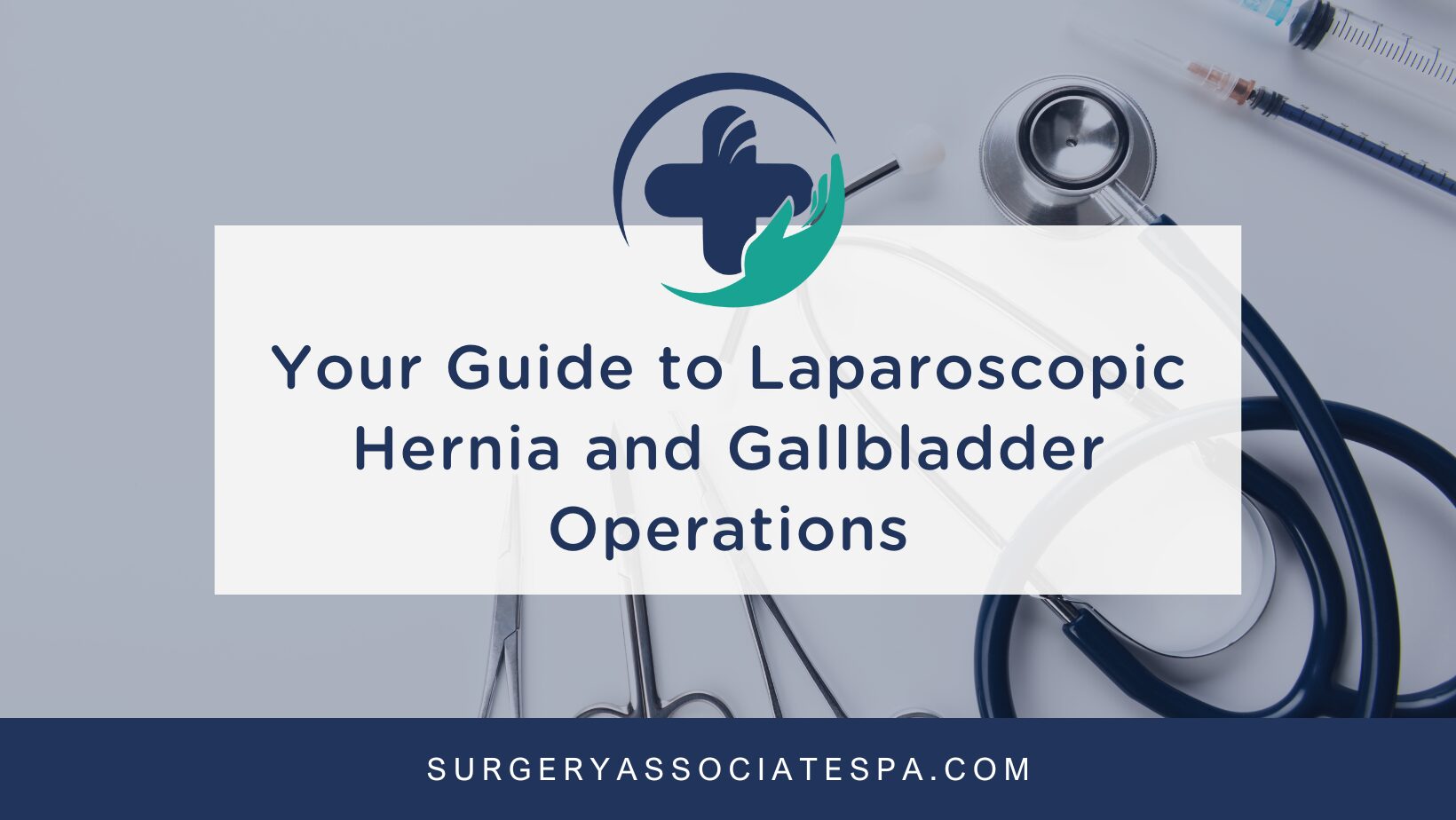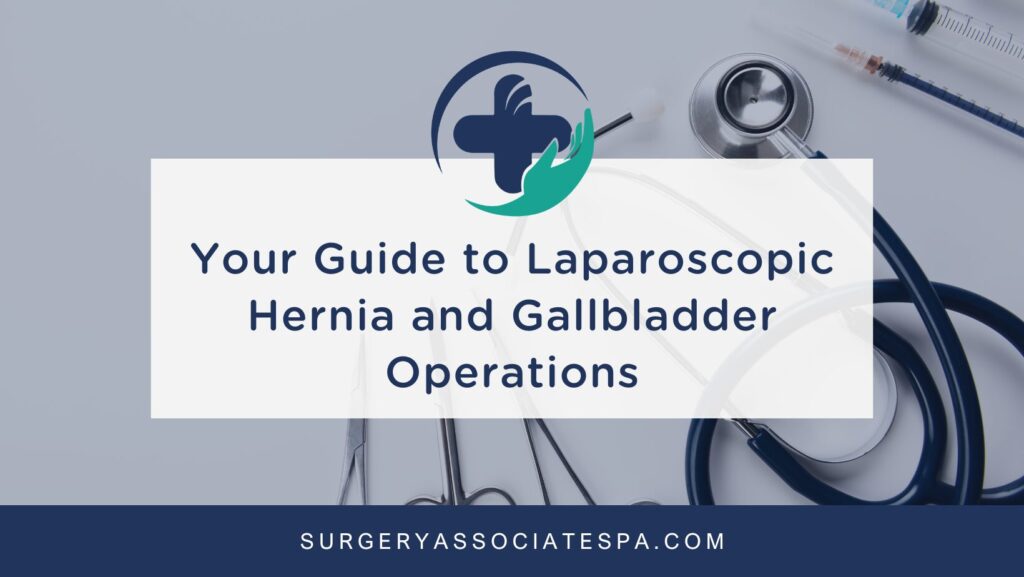
Every year, an estimated 611,000 ventral and 1 million inguinal hernia repairs are performed in the United States, according to the Healthcare Cost and Utilization Project data and the US Food and Drug Administration. Along with cholecystectomies (gallbladder removals), hernia repairs are one of the most commonly performed general surgery operations, and thanks to recent technological developments in the specialty, many of these operations can be performed laparoscopically. This tends to result in faster recovery times and safer procedures.
At Surgery Associates, our expert providers perform laparoscopic hernia and gallbladder operations regularly, and today, we’re walking you through everything you need to know about these routine procedures.
Cholecystectomy (Laparoscopic Gallbladder Removal)
- Why is this operation performed? Several factors can lead your physician to recommend a gallbladder removal procedure. These factors include cholelithiasis (gallstones); inflammation; or biliary dyskinesia, which occurs when the gallbladder does not function correctly due to a defect.
- Is it safe, and what are the risks? The Mayo Clinic considers a cholecystectomy a safe, common procedure with only a small risk of complications. A laparoscopic procedure, a cholecystectomy only requires small incisions, and the recovery time is much shorter than that of an open gallbladder removal procedure.
Laparoscopic Hernia Repair
- What are the benefits of a laparoscopic hernia repair? Laparoscopic hernia repairs cause less scarring and require fewer postoperative pain medications. Only about 16% of patients need additional surgery because their hernia returned within 10 years after the first surgery.
- What are the risks of hernia repair? Like all surgical procedures, there are some risks associated with hernia repair, but your team at Surgery Associates will work to keep these risks manageable and minimal. Infections around the incisions, seromas, and hematomas can occur, though it is not likely.
Laparoscopic Procedures: General Information
-
- What is laparoscopic surgery? In general surgery procedures, laparoscopic surgery is an advanced technology in which the surgeon operates inside the body through a small tube that is connected to a video monitor.
- What are the benefits of this technique? Rather than the single-incision approach of traditional surgery methods, this minimally-invasive technique uses several .5-1 cm incisions. Additionally, patients typically experience less pain, recovery time, and scarring.
- What operations are performed laparoscopically? Gallbladder and hernia operations are two common laparoscopic operations performed at Surgery Associates. We also offer intestinal procedures, appendectomies, biopsies and special diagnoses, and Nissen Fundoplication and LINX procedures (surgical treatments designed to alleviate acid reflux).
I really recommend him for all your surgery needs.”
– T.H. | Patient
With over 78 years of combined experience in general surgery, the providers at Surgery Associates are committed to providing the best quality of care to our community. We are proud to support our patients and walk you through every step of your surgery process, no matter what procedure you require.
At Surgery Associates, we understand the stress that comes with finding out you are experiencing a health issue. That’s why we are committed to providing same-day appoints with no referral needed. Call us today at (662) 844-5344 or visit our Patient Resources page to request an appointment. Our office is located at 440 Pegram Drive in Tupelo, Mississippi.











